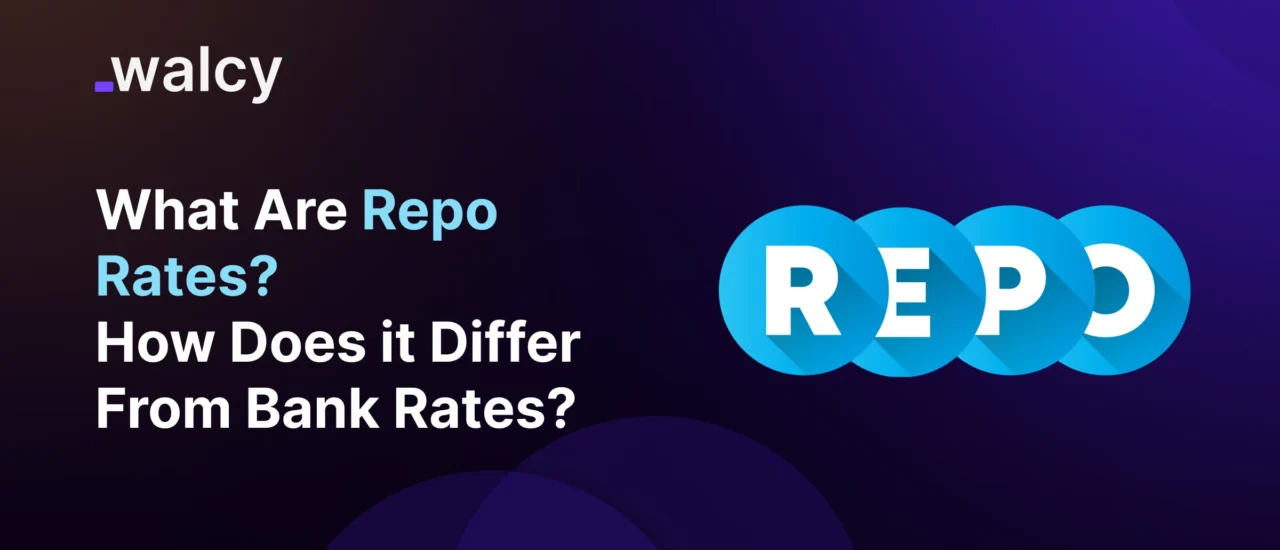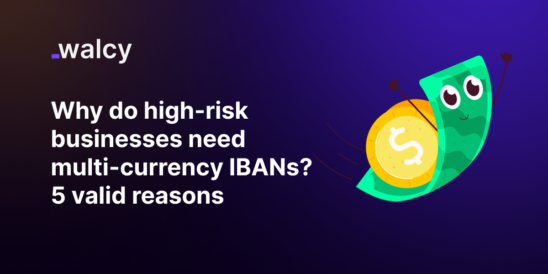Monetary policy can only be gleaned when someone understands how economies work in today’s interlinked world. To that respect, come the repo rates and bank rates.
This article discusses what the repo rate is, how it works, and how it differs from a bank rate. Concepts regarding reverse repo and reverse repurchase rates have also been discussed, where the central banks themselves determine different repo rates.
What is the Repo Rate?
The repo rate (short for “repurchase rate”) is the interest rate at which a central bank, like the Federal Reserve in the U.S. or the Reserve Bank of India (RBI), lends money to commercial banks.
The interest rate of the country’s central bank for lending money to the country’s commercial banks against securities goes by the name of the repo rate.
This is the rate that is required for the control of the money supply in the economy and to have some effect on general inflation and interest rates. A commercial bank approaches the central bank when urgent short-term funds are urgently needed.
The central bank sells securities with an agreement for their repurchase in due course of time at a trifle higher price that would incorporate the repo rate.
The repo rate is thus the monetary policy tool through which the central banks regulate the liquidity in the banking system.
In other words, if the central bank intends to pump in more liquidity, then it lowers the repo rate, and hence the cost of borrowing for the commercial banks decreases. While doing so, if it wants to check the rising inflation, then the central bank increases the repo rate so that the cost of borrowing rises.
Read about: Understanding Liquidity in Banking; Detailed Guide
Current Repo Rates
Of course, the repo rate today is different in each country and may change with the prevailing economic conditions.
As a matter of fact, on current dates, the Federal Reserve has fixed its federal bank repo rate given rising risks of inflation or growth in the economy.
From this, it follows that knowledge about the prevailing repo rate becomes very important to businesses, investors, or people because it trickles down to many of the financial instruments they use, including loans and mortgages.
How does the Repo Rate work?
The operation of the repo rates works can be elaborated by the following:
- Liquidity Need: A commercial bank is facing a short-run deficiency of liquidity and needs cash for payment purposes.
- Sale of securities: The government securities are sold to the central bank at the prevailing repo rate.
- Repurchase Agreement: It will buy back those securities in a week or any other duration at a higher price by paying interest according to the rate of repo.
- Loan and Interest Payment: The cost of borrowing, which influences the loan’s interest rate, is the variance between the selling and repo rates. It’s a method through which the central bank keeps a tab on the money supply to achieve economic stability.
Read about: Understanding Statutory Liquidity Ratio. Why is it crucial?
Differences between Repo Rates and Bank Rates
While both the repo rate and bank rate fall under monetary policy, they are significantly dissimilar regarding operational methods and objectives as well.
Definitions
- Repo Rate: This is the rate for which the central bank lends finance to different commercial banks against collateral securities. It acts as a tool for short-term liquidity management.
- Bank Rate: The interest rate that a central bank charges on loans to commercial banks is known as the bank rate. These are usually longer-term and set the general interest rate for the economy.
Key Differences
- Collateral Requirement: One of the jolting differences in both types is that the repo rate asks for collateral in securities to be put up while the bank rate does not require any collateral for the loan given.
- Prescribed Purpose: Usually, the repo rate is utilized for short-term liquidity management, while the bank rate is utilized to have control over the longer-term interest rates and general economic activities.
- Impact on the cost of borrowing: The changes in the repo rate takes usually effect immediately in the commercial bank’s cost of borrowing while changes in the bank rate may trickle down the economy after some time.
Current Trends
Prevailing global economic conditions at the current date including inflationary tendencies and growth approach policies of central banks also influence the bank rate.
In case of inflation, for example, the central bank can raise the repo rate together with the bank rate to curb the money supply in the market.
Related Concepts: Reverse Repo and Reverse Repurchase Rate
Reverse Repo Rate
The repo rate is exactly the inverse of the reverse repo rate. It is the rate at which the central bank borrows from the commercial banks, taking securities as collateral. This mechanism is resorted to soaking up the redundant liquidity from the banking system to control inflation.
It simply means that when the central bank increases the reverse repo rate, the commercial banks borrow less and, on the contrary, park their money with the central bank. In turn, this decreases the money supply in the economy.
Reverse Purchase Rate
Other terms interchangeably used with reverse repo rate include “reverse purchase rate”. It is termed this because this is the method used by the central bank to borrow from commercial banks while offering securities as collateral.
It forms a very important tool in the management of liquidity in the financial system and controlling the short-term rates of interest.
Understanding Commercial Bank Repo Rates
Commercial banks may, therefore, have their repo rates quite independent of the rates the central bank decides upon. These would obviously depend upon a few factors that include but are not limited to the cost of funds, the risk premise, and market conditions.
It thus follows that banks can offer different customers different repo rates based on the creditworthiness of the customer and the type of collateral the former provides them.
Commercial Banks Determinants of Repo Rate
- Cost of Funds: The existing cost of capital for commercial banks determines its repo rates.
- Market Demand: If demand for short-term borrowings is on the higher side, banks can increase their repo rates to fully utilize such market conditions.
- Regulatory Framework: Central bank policies and various regulations may affect how the commercial bank determines its repo rates.
Federal Bank Repo Rates
The repo rate in the federal bank is the monetary policy tool developed by the United States Federal Reserve. Along with the repo operations, the Fed pumps liquidity into the financial system during turbulent times.
How the Federal Bank Repo Rate Works
- Conduct the Repo Operation: The Federal Reserve conducts a repo operation to provide cash the banks need to operate.
- Setting the Rates: Trickle-down change in the federal bank repo rate allows it to take part in broad interest rates in the economy-from consumer loans to mortgages.
- Market Reactions: A shift in the federal bank repo rate normally will see swift responses in financial markets as investors begin readjusting their expectations in line with the new rate environment.
Conclusion
The concept of the repo rate and its relation with the bank rate becomes vital for any enthusiast in finance, economics, or investment.
The fact is that the repo rate bears immense importance for operating on short-term liquidity, while the bank rate has influences on longer-term interest rates and economic conditions.
Both rates are implementable instruments employed through the central banks for money supply regulation and retaining economic stability along with its accompanying concepts of reverse repo and commercial bank repo rate.
To put it differently, since economies are in constant motion and financial markets are integrating across the globe, awareness of these fluctuations in rates would become fundamentally significant in making correct informed decisions in finance.
Perhaps you may be an investor, an entrepreneur, or virtually anybody who is interested in how this sophisticated mechanism of finance works. The knowledge of the terms would give you wide-ranging insight into the subtleties of modern banking and finance.
FAQs
Q1: What is the primary purpose of the repo rate?
The primary purpose of the repo rate is to regulate liquidity in the banking system.
Q2: How does a change in the repo rate impact consumers?
Changes in the repo rate might affect the interest rates on loans and mortgages. For instance, if the repo rate decreases, commercial banks may lower their lending rates, making loans cheaper for consumers.
Q3: Why do central banks use collateral for the repo rate but not for the bank rate?
The repo rate involves a collateralized loan to mitigate risk. Since the bank rate is typically used for longer-term borrowing, it is generally extended without collateral to facilitate broader monetary policy goals.
Q4: What happens when the central bank raises the bank rate?
When the central bank raises the bank rate, it typically leads to higher borrowing costs for commercial banks, which can then pass those costs onto consumers through increased interest rates on loans and mortgages.
Q5: Can commercial banks set their repo rates?
Yes, commercial banks can set their repo rates based on factors such as the cost of funds, market demand for loans, and regulatory guidelines. This means different banks may offer varying rates.
Q6: What is the reverse repo rate, and how does it function?
The reverse repo rate is the rate at which central banks borrow money from commercial banks, offering securities as collateral. This mechanism helps absorb excess liquidity in the banking system and can influence inflation.
Q7: How does the federal bank repo rate specifically impact the U.S. economy?
The federal bank repo rate impacts the U.S. economy by influencing overall liquidity and interest rates. Adjustments in this rate can lead to swift changes in financial markets, affecting everything from consumer loans to investment decisions.
Do follow us on Facebook and LinkedIn, to stay connected with us.



